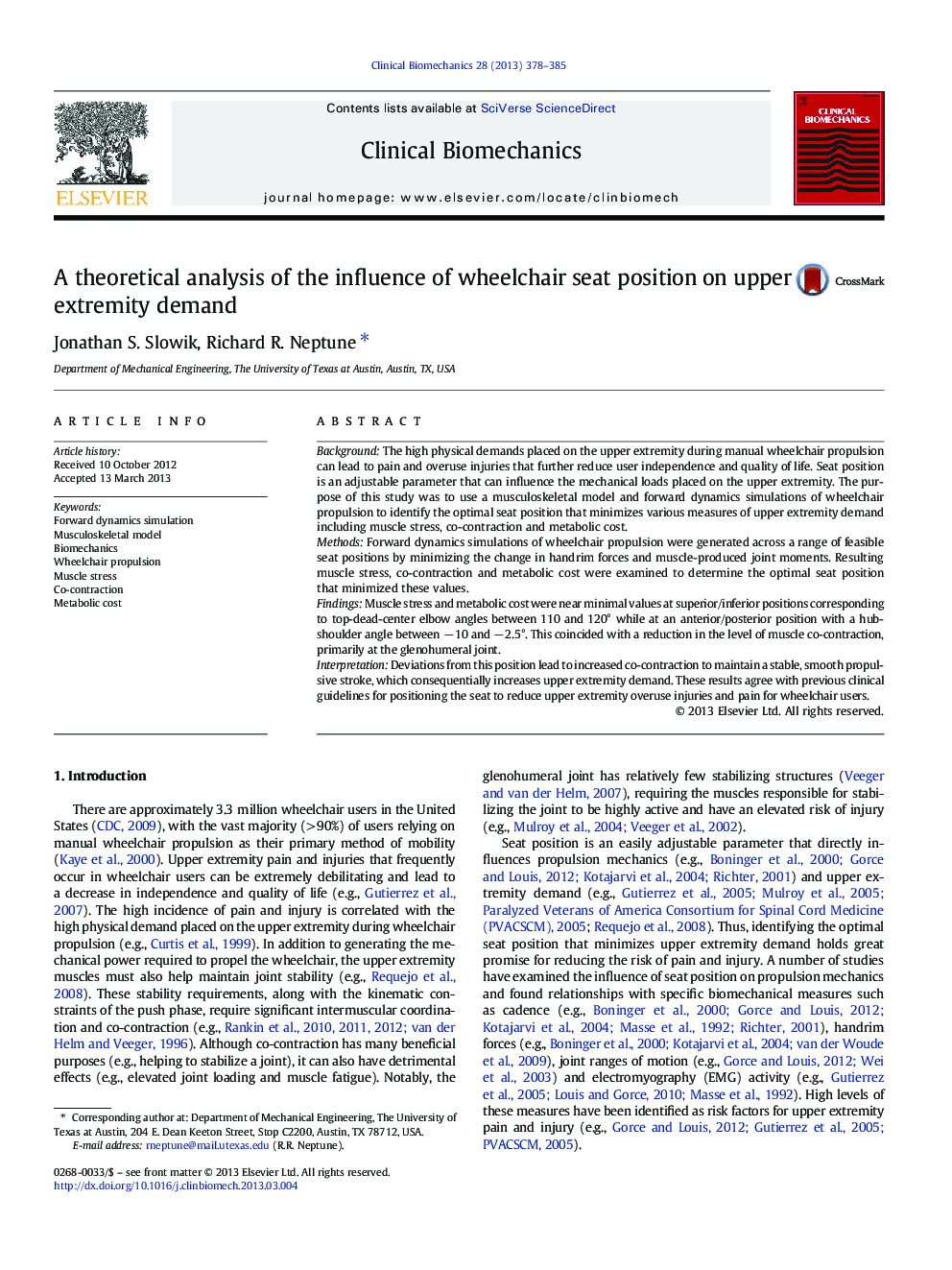| Article ID | Journal | Published Year | Pages | File Type |
|---|---|---|---|---|
| 6204938 | Clinical Biomechanics | 2013 | 8 Pages |
BackgroundThe high physical demands placed on the upper extremity during manual wheelchair propulsion can lead to pain and overuse injuries that further reduce user independence and quality of life. Seat position is an adjustable parameter that can influence the mechanical loads placed on the upper extremity. The purpose of this study was to use a musculoskeletal model and forward dynamics simulations of wheelchair propulsion to identify the optimal seat position that minimizes various measures of upper extremity demand including muscle stress, co-contraction and metabolic cost.MethodsForward dynamics simulations of wheelchair propulsion were generated across a range of feasible seat positions by minimizing the change in handrim forces and muscle-produced joint moments. Resulting muscle stress, co-contraction and metabolic cost were examined to determine the optimal seat position that minimized these values.FindingsMuscle stress and metabolic cost were near minimal values at superior/inferior positions corresponding to top-dead-center elbow angles between 110 and 120° while at an anterior/posterior position with a hub-shoulder angle between â 10 and â 2.5°. This coincided with a reduction in the level of muscle co-contraction, primarily at the glenohumeral joint.InterpretationDeviations from this position lead to increased co-contraction to maintain a stable, smooth propulsive stroke, which consequentially increases upper extremity demand. These results agree with previous clinical guidelines for positioning the seat to reduce upper extremity overuse injuries and pain for wheelchair users.
